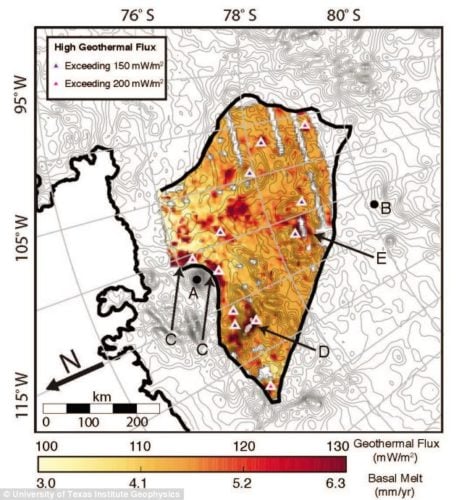Subglacial volcanoes are melting Antarctic glaciers from below!
The heat released from volcanic activity could speed up ice sheet collapse and increase sea levels by 2m.

Antarctica is a land of ice. But below the West Antarctic Ice Sheet, there is fire as well – UNDER-ICE VOLCANOES. The collapse of the entire sheet would cause an increase of global sea level of between 1 and 2 meters. However, it is unclear how the West Antarctic Ice Sheet behaves.
New scientific results show that large portions of the Thwaites Glacier, one of the West Antarctica’s most prominent, rapidly evolving, and potentially unstable contributors to global sea level rise are actively melting in response to geothermal flux consistent with rift-associated magma migration and volcanism.
Look at creepy world maps of rising water.
These volcanoes packed under the ice and other geothermal “hotspots” are contributing to the melting of Thwaites Glacier and thus of the West Antarctic Ice Sheet. Areas of the glacier that sit near geologic features thought to be volcanic are melting faster than regions farther away from hotspots. This discovery could change predictions of ice melting across the globe and supports the hypothesis that heterogeneous geothermal flux and local magmatic processes could be critical factors in determining the future behavior of the West Antarctic Ice Sheet.













[…] Or is there a volcano down there? […]